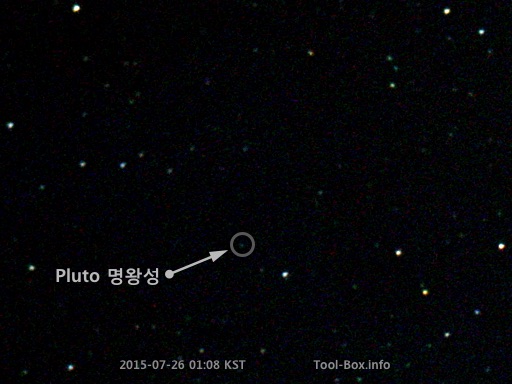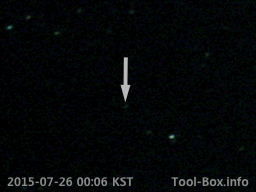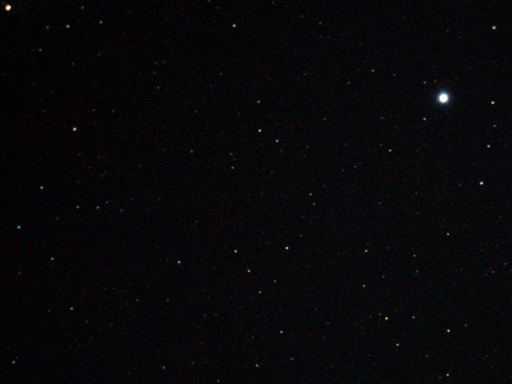Staring at Pluto out the window
Posted by Wesley onFor the past few weeks, clouds and rain due to the monsoon prevented me from seeing a clear sky at night. But that period is nearing its end, and last night I had a near-perfect opportunity - no clouds and no haze. Brightness of the first-quarter Moon was about the only fly in the ointment.
As I was only able to observe the southern sky out the window of my room, I consulted a star chart to see if anything interesting was there to see. Pluto immediately caught my eyes. As you might know, this dwarf planet is making headlines at the time of this writing because the New Horizons probe made a flyby two weeks ago. The unprecedented details of the images from the probe is capturing public interest, and mine. So I wondered if I could see a glimpse of it with my own telescope.
Problem is, Pluto is very faint - 14.1-magnitude right now. Based on my past observations, it would be at or just outside my limits even with astrophotography. Sure enough, when I pointed my telescope to the right position, I couldn't make it out visually. So I attached my DSLR camera and took several long-exposure photos in hoping that they'd be more revealing. One of such result is the photo you see above. The brightest star is ξ1(Xi 1) Sagittarii, a 5.1-magnitude star. Most of the rest are fainter than 10-magnitude.

Pluto found - it was 2/3 from the top and 1/3 from the left
After carefully comparing the photo with a detailed star chart, I finally found a dot that didn't belong to a star. This seemed to be Pluto that I was looking for. But to make sure, I compared all the photos I took over the span of about an hour and looked to see if there was any movement - a telltale sign that it's not a star, but an object moving around the solar system.

Movement of Pluto animated
Indeed there was. This was the dwarf planet I was looking for. This process of comparison was basically how Pluto was identified and discovered in the first place back in 1930, so it was pretty satisfying to retrace the steps. I'm also glad to know that the southern sky at Naju is still dark enough to see this faraway world.
Telescope: Celestron NexStar 6SE
Device: Canon EOS 450D (prime focus)
Settings: (1500mm) - ISO 1600 - 30s - (f/10)
Filters: None
Time: 2015-07-26 00:06 - 01:13 KST
Location: Naju, Korea
Defined tags for this entry: astronomy, Canon EOS 450D, Celestron NexStar 6SE, dwarf planet, planet, Pluto, telescope
